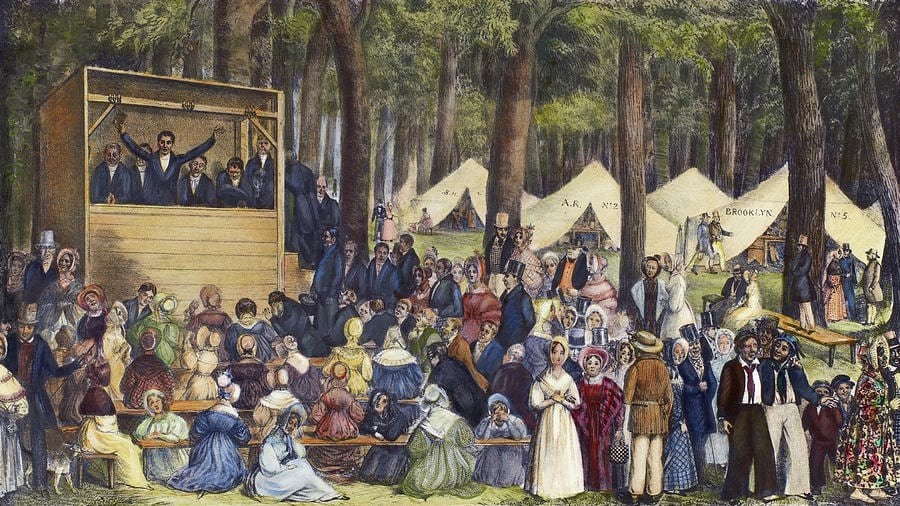The Second Great Awakening [1820-1860]
Charles Grandison Finney continues the tradition begun by George Whitefield in the colonial era and reshaped the message to suit the expansive commercial society of the early 19th century fostering the rise of voluntary organizations to promote religious and secular reforms.

Historical Context: Many Americans experienced uncertainty and anxiety as they confronted a rapidly changing society that saw the rise of the Market Revolution and the increase of urbanization and immigration.
Video Clip: Religion along the Erie Canal
Far from the shackles of church authorities that dominated European life for centuries, land along the canal provided ample imaginative possibilities for working out one’s salvation and ushering in the reign of God’s kingdom on earth. Apocalyptic fever ensued, resulting in a series of self-styled prophets who believed themselves to be voices crying in the wilderness.
"Within three decades of its opening this “psychic highway” cultivated experimental spiritual groups, including the Mormons, the Adventists, spiritualists, followers of a revived apocalypticism and utopian communal societies such as the Oneida Community, with the Amana Colony and the Shakers passing through. The emotion-laden revivals of the Second Great Awakening also ignited along the way, giving rise to the evangelicalism that we know today.
The Second Great Awakening, which spread religion through revivals and emotional preaching, sparked a number of reform movements by challenging indifference and encouraging citizens to devote themselves to the well-being of others. Those drawn to the message of the Second Great Awakening yearned for stability, decency, and goodness in the new and turbulent American republic.
Geographic Context: The Second Great Awakening served as an organizing process that created, “a religious and educational infrastructure” across the western frontier.

"Traveling preachers filled billowing tents with celebrants and for days afterward, without the prompting of ministers or revivalists,
men and women would speak in tongues and writhe in religious ecstasy. Many would report visitations from angels or spirits.”
Horowitz, Mitch. Occult America: The Secret History of How Mysticism Shaped Our Nation.Bantam Books, 2009.
Similarities between the First Awakening and the Second Great Awakening
Both events spread religion through revivals and emotional preaching
Both inspired movements, the first Great Awakening inspired a movement against established Church authority, the second Awakening inspired multiple reform movements in Antebellum.

REVIVALISM in the NORTH and CIRCUIT PREACHING in THE SOUTH
In what ways did the Second Great Awakening in the North influence TWO of the following?
Abolition
Temperance
The cult of domesticity
Utopian communities
[Summary of Antebellum Reform]
Education
Temperance Movement (no alcohol)
Women’s Rights Movement
Comments (0)
You don't have permission to comment on this page.